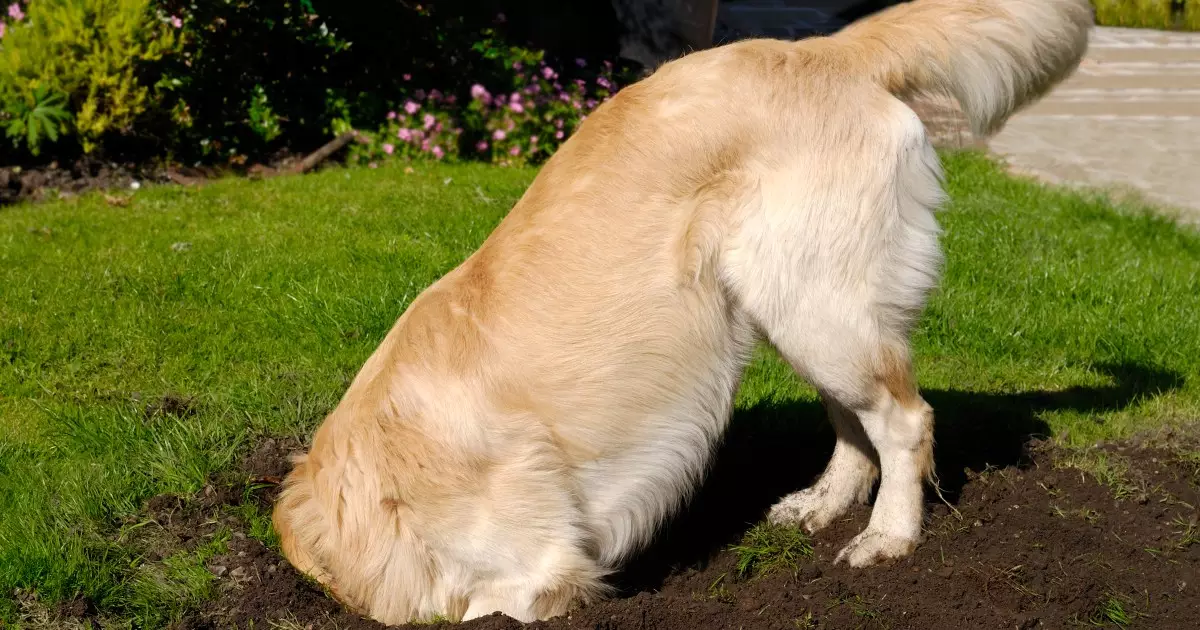When you own a dog, chances are you’ve encountered the thrilling yet frustrating spectacle of your furry friend enthusiastically overturning earth in the backyard. This behavior can strike a chord of humor in owners, but also an edge of anxiety as beautifully manicured lawns are turned into chaotic landscapes. Digging is not merely a quirky habit; it’s an instinctual behavior rooted deeply in the history and biology of dogs. By understanding the motives behind this natural inclination, pet owners can take effective steps to manage it. In this article, we’ll explore the reasons behind this digging phenomenon and offer solutions to lessen its impact.
The Motivations Behind the Digging Behavior
Different dogs dig for varied reasons, and understanding these motivations is crucial. In some breeds, this behavior is a practical response to environmental conditions. For instance, heavy-coated breeds like Huskies may dig to create a cooler spot during sweltering weather, while Earth dogs like Terriers instinctively dig to pursue prey underground, such as gophers and moles. Scent hounds might dig under fences in pursuit of small animals or to escape the confines of their yard to seek companionship during mating seasons.
An important yet often overlooked reason for digging is boredom. Dogs are inherently active creatures, and without sufficient mental and physical stimulation, they can find themselves resorting to digging out of sheer boredom. This is especially common in younger dogs and those with unspent energy. Adolescent canines, characterized by their exuberant and high-spirited nature, may engage in digging as a form of entertainment when left alone outdoors.
Pet owners facing this dilemma have two effective pathways to consider. The first option is to minimize the triggers that lead to digging. For instance, if a kennel of dogs in your neighborhood or small wildlife gets your canine digging, having a chat with your neighbors about that could be a first step. Redirecting your dog’s focus to stimulating activities is also essential. When hot days beckon, limiting outdoor time for a Husky with access to indoor air conditioning or a kiddie pool might reduce the need to dig cooling pits.
Whether it’s the desire to chase or the pursuit of pleasure, extending mental challenges to your dog is incredibly important. Engaging in interactive games, such as hide and seek with treats, provides mental stimulation and keeps them active. Walks around the neighborhood, playdates at dog parks, or organized training sessions can fill the socialization gap that may contribute to their digging instincts.
For dogs whose innate desire to dig cannot easily be curtailed, a designated ‘digging pit’ can provide a satisfying solution. Creating a digging pit is a straightforward process that allows your dog to fulfill their digging urges without wreaking havoc on your yard. Choose a part of your lawn that’s less visible or less frequently disturbed, and frame the space with stones or bricks. Loosen the soil and add sand, creating an inviting texture.
To encourage your dog to use the digging pit, bury a favorite toy or treat within the area. This creates an association between the pit and positive reinforcement. Owners should accompany their pets to the digging area initially to guide them in using it properly. Every time your dog digs in the right place, shower them with praise and rewards to reinforce the behavior.
Furthermore, if an enthusiastic digger veers off and begins to dig elsewhere, it’s crucial to gently redirect them back to their designated pit. This consistent training will strengthen the association between the pit and acceptable digging behavior over time.
Understanding and Embracing Digging
Lastly, while digging might seem disruptive, it’s essential to comprehend that it is a fundamental part of dog behavior. Training, intuitive management strategies, and environmental enrichment can facilitate a healthier relationship between your dog and their instincts. By establishing clear boundaries and providing suitable outlets for digging, pet owners can create a harmonious environment that respects the dog’s nature while maintaining the integrity of their landscape. With these strategies in place, both dog and owner can coexist with less frustration, fostering a happier home environment.

